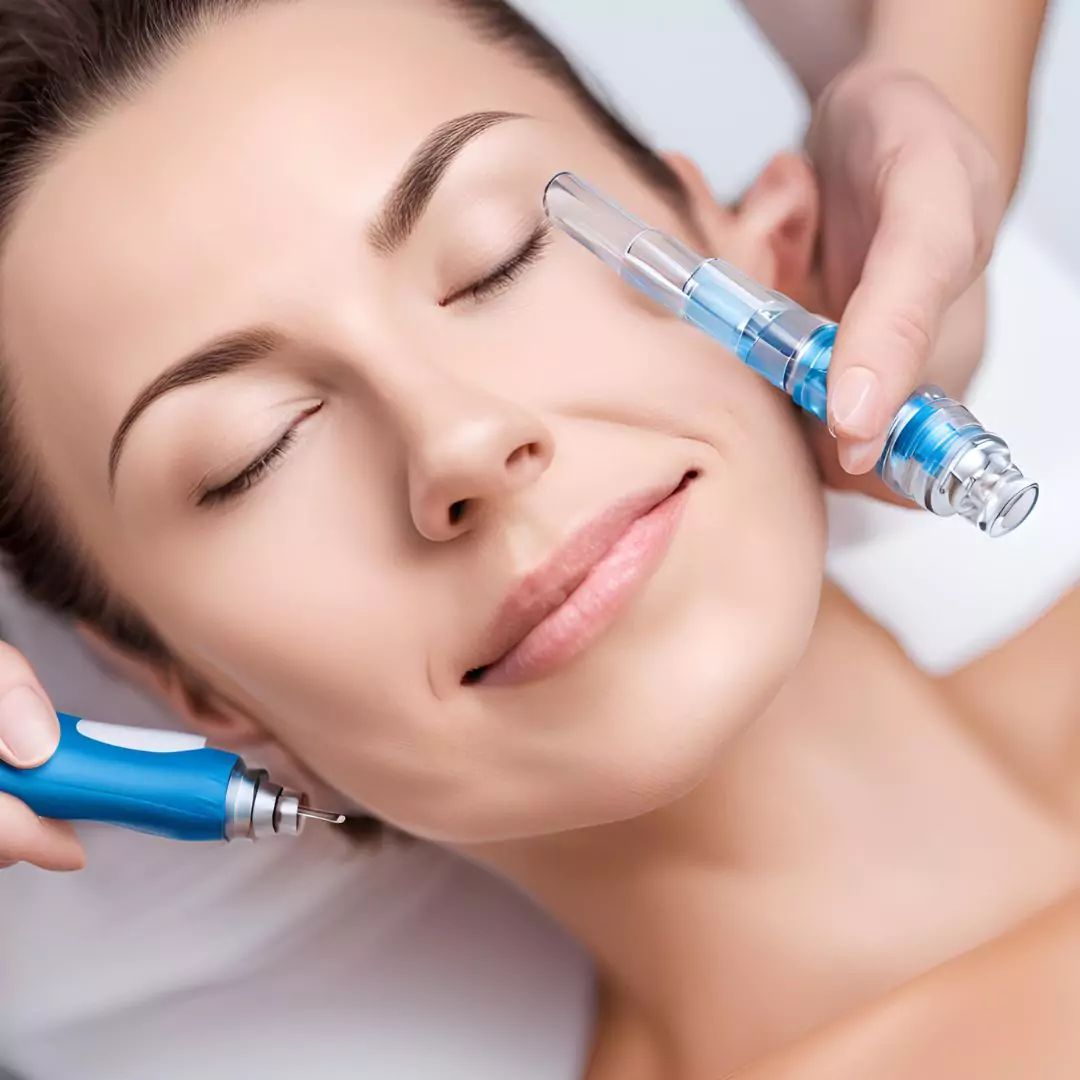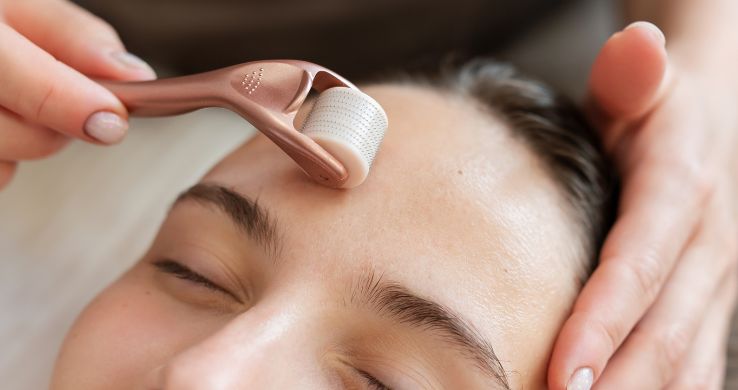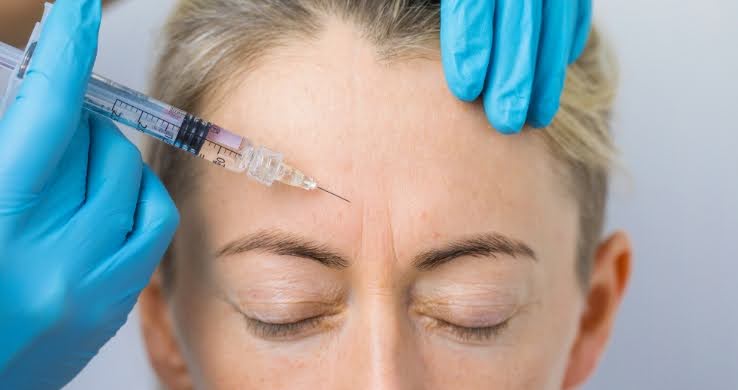Microneedling has gained immense popularity in recent years for its ability to rejuvenate and improve the texture of the skin. This minimally invasive procedure involves the use of a device with tiny needles that create microchannels in the skin, stimulating collagen production and enhancing the absorption of skincare products. Over time, microneedling has evolved, giving rise to innovative variations that offer even more impressive results.
What is Microneedling
Microneedling, also known as collagen induction therapy, is a minimally invasive cosmetic procedure that has gained popularity for its ability to rejuvenate the skin. The process involves puncturing the skin with tiny needles, which create controlled micro-injuries. “Through physical trauma from needle penetration, [microneedling] induces a wound healing cascade with minimal damage to the epidermis” (1). These injuries trigger the skin’s natural healing response, stimulating the production of collagen and elastin, essential proteins that maintain the skin’s firmness and elasticity. As a result, microneedling can help improve the overall texture and appearance of the skin, leading to a more youthful and radiant complexion.
In addition to anti-aging, another benefit of microneedling is addressing various skin concerns such as acne scars, fine lines and wrinkles, hyperpigmentation, and uneven skin tone. By promoting collagen production and enhancing skin cell turnover, microneedling can help reduce the visibility of scars, smooth out wrinkles, and even out skin discoloration.
The Procedure
The procedure begins with the application of a numbing cream to ensure the patient’s comfort during the treatment. A microneedling device is then used to create microscopic channels in the skin. These channels not only stimulate collagen production but also enhance the absorption of topical serums and skincare products. This increased absorption allows for better delivery of active ingredients, maximizing the benefits of the products used during and after the treatment.
Aftercare
After microneedling, it is common for the skin to appear slightly red and feel sensitive, similar to a mild sunburn. These side effects typically diminish within a few days as the skin begins to heal. Over the following weeks, as the collagen production ramps up, the skin’s texture and tone gradually improve, revealing a smoother and more radiant complexion. Consistent treatments spaced out over time can lead to long-lasting results, making microneedling a popular choice for individuals looking to rejuvenate their skin without undergoing more invasive procedures.
The Evolution of Microneedling Techniques
Over the years as the demand for microneedling has grown, researchers and aesthetic professionals have begun exploring innovative variations of the procedure to address specific skin concerns and provide even better results. These advancements have revolutionized the field of microneedling, offering more targeted and customizable treatments.
One of the most notable innovations in microneedling is the combination of radiofrequency (RF) energy with the traditional technique. Radiofrequency microneedling delivers heat energy into the deeper layers of the skin, stimulating collagen production and tightening the skin. It is particularly effective for treating sagging skin, wrinkles, and large pores. Research also shows that “both radiofrequency micro needling and fractional CO2 laser treatment methods are effective for the treatment of acne scars” (2).
But the advancements don’t stop there. Platelet-rich plasma (PRP) and platelet-rich fibrin (PRF) microneedling are variations that involve the application of the patient’s own blood-derived products. Microneedling with PRP utilizes concentrated platelets, rich in growth factors, to enhance collagen production and accelerate healing, although one study concluded that using the PRP in conjunction with microneedling gave “no added advantage of topical application of PRP over microneedling in acne scars” (3). Microneedling with PRF uses fibrin as a scaffold to promote natural regeneration and improve skin texture. Talk to your skin care professional to learn more about the differences in using PRP microneedling vs PRF microneedling.
Another exciting development in microneedling is exosome microneedling. This technique takes advantage of the regenerative properties of exosomes, which are extracellular vesicles derived from stem cells. These exosomes are applied topically during or after microneedling to boost collagen production, rejuvenate damaged skin, and improve overall skin health. This cutting-edge approach offers a new level of skin rejuvenation and has shown promising results in clinical studies.
Mesotherapy, another technique utilizing microneedles, shares similarities with microneedling, but there is a key difference in the substances used. Mesotherapy involves injecting cocktails of vitamins, polynucleotides, and other active ingredients directly into the skin. While both treatments target skin rejuvenation, microneedling is preferred for its ability to generate collagen and improve skin texture.
With ongoing research and advancements in technology, the future of microneedling is promising. As scientists and researchers discover more about the skin’s regenerative capabilities and the potential of combining different modalities, we can expect even more exciting developments in the field of microneedling. The journey of microneedling continues to unfold, offering hope and possibilities for those seeking effective and non-invasive solutions for their skin concerns. Whether you’re looking to diminish acne scars, reduce wrinkles, or improve overall skin texture, microneedling and its innovative variations offer a range of solutions to meet your skincare needs.
References:
- Iriarte C, Awosika O, Rengifo-Pardo M, and Ehrlich A. “Review of applications of microneedling in dermatology” Clinical, Cosmetic,and Investigative Dermatology. 2017; 10: 289–298.
- Hoq A.J.M.S, Alam M.S, Rahman G.M.M. “A comparative study of radiofrequency micro-needling with platelet rich plasma and fractional LASER in acne scar management” International Journal of Research in Dermatology. June 24 2022; 8(4).
- Gupta, M. Barman, K.D. Sarkar, R. “A Comparative Study of Microneedling Alone Versus Along with Platelet-Rich Plasma in Acne Scars” The Journal of Cutaneous and Aesthetic Surgery. Jan-Mar 2021. 64-71.





